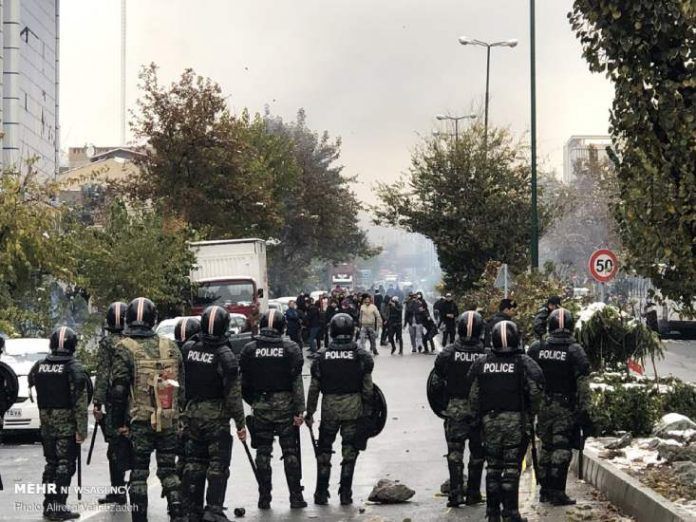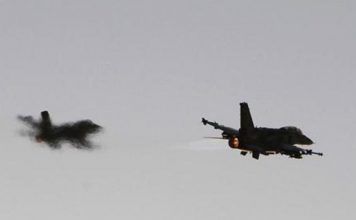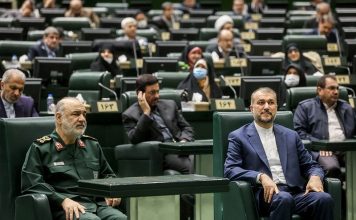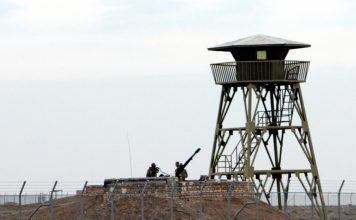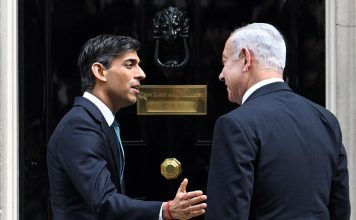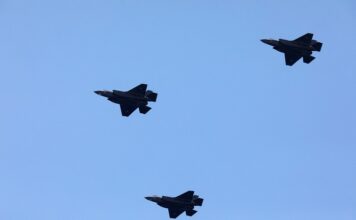By Parisa Hafezi
DUBAI, May 19 (Reuters) – Iranian security forces fired live rounds and tear gas to disperse anti-government protesters in several provinces on Thursday, according to posts on social media, as protests triggered by rising food prices continued to spread.
This week, #IranProtests have spread across the country as the people unite and call for an end to Khamenei’s regime.
We’ve compiled some of their most common protest slogans from this week and added English subtitles.
Please share and show your support for the people of #Iran. pic.twitter.com/5fmBGxiNOE
— NUFDI (@NUFDIran) May 12, 2022
Iranians took to the streets last week after a cut in food subsidies caused prices to soar by as much as 300% for some flour-based staples. The protests quickly turned political, with crowds calling for an end to the Islamic Republic, echoing unrest in 2019 which began over fuel prices hike.
As #IranProtests continue across the country, protesters in Golpaygan, #Iran today chanted:
"When Iran does not have its King (Shah), there is no accountability!" pic.twitter.com/fDqYQQ73qg
— NUFDI (@NUFDIran) May 18, 2022
Funeral procession for #BehroozEslami, a protestor killed during #IranProtests2022 in #Babaheydar a city in the Central District of #Farsan County, #Iran
R/T @1500tasvir #KayhanLife pic.twitter.com/JQQLyD2Rwc— Kayhan Life (@KayhanLife) May 18, 2022
Social media footage not verified by Reuters showed at least six people killed and dozens injured in past days. There has been no official comment on any death toll.
On Thursday footage posted on social media showed intense clashes in cities including Farsan in central Iran, where riot police fired live rounds at demonstrators. In Shahr-e Kord and Hafshejan, security forces used teargas and clubs to disperse the protesters.
A Shahr-e Kord (capital city of Chaharmahal and Bakhtiari Province in #Iran) citizen is arrested and beaten by Islamic Republic’s special forces. #IranProtests2022 #IranProtests #ForIran #KayhanLife pic.twitter.com/ZJpqMYWYjo
— Kayhan Life (@KayhanLife) May 17, 2022
Protestors in #Golpayegan, capital of Golpayegan County in #Isfahan Province chant in #Persian: “No change, no improvement, the youth are wasted. #RezaShah, Rest In Peace”#IranProtests2022 #IranProtests #ForIran #KayhanLife #IranRegimeChange #No2IslamicRepublic pic.twitter.com/TbgNDPLtpT
— Kayhan Life (@KayhanLife) May 17, 2022
“Fear not, fear not, we are in this together,” demonstrators in the southern city of Dezful could be seen chanting in one video.
Reuters was unable to verify the authenticity of the social media footage cited.
Senior police official Qasem Rezai warned on Thursday that “illegal gatherings were intolerable and will be confronted,” according Iran‘s semi-official ILNA news agency.
SPECIAL REPORT- Iran’s Leader Ordered Crackdown on Unrest: “Do Whatever It Takes to End It”
FEARS OF 2019 PROTESTS REVIVAL
The government last week acknowledged the protests but described them as small gatherings. Iranian state media reported last week the arrests of “dozens of rioters and provocateurs”.
Iran‘s rulers fear a revival of the 2019 protests, the bloodiest in the Islamic Republic’s history, although the authorities have dismissed reported death tolls including more than 300 according to Amnesty International, and a Reuters account of 1,500 killed.
The government also cut subsidies for basic goods including cooking oil and dairy products in a move it has described its decision as “fair redistribution” of subsidies to lower-income people.
However, protesters have expanded their demands, calling for more political freedom, an end to the Islamic Republic and the downfall of its leaders, according to witnesses and social media posts.
Social media footage on Thursday showed protesters burning pictures of Iran‘s top authority, Supreme Leader Ayatollah Ali Khamenei, and chanting “We don’t want the rule of the clerics”, while calling for the return of Reza Pahlavi, the exiled son of the toppled shah of Iran.
In a video message on his Twitter account, Reza Pahlavi called for unity among Iranians “for a free Iran” and expressed condolences to the families of “those killed during the unrest”.
Some social media users inside Iran said that internet services has been disrupted since last week, seen as an apparent effort by authorities to stop the use of social media to organise rallies and disseminate videos. Iranian officials said there had been no disruption to internet access.
Internet Blackouts Endanger Lives of Iranians, Says NetBlocks Founder
Almost half of Iran‘s population of 85 million lives under poverty line, according to official figures. Combined with rising inflation, growing unemployment, a slump in the national currency and state corruption, U.S. sanctions have further crippled the economy.
In 2018, then-U.S. President Donald Trump pulled Washington out of Iran‘s 2015 nuclear deal with six powers and reimposed sanctions on Iran. Indirect talks between Tehran and Washington have stalled since March.
[aesop_image img=”https://kayhanlife.com/wp-content/uploads/2018/11/2000-05-24T120000Z_290008275_RP2DRIBIJIAA_RTRMADP_3_IRAN-REFORM.jpg” panorama=”off” credit=”FILE PHOTO: A student from Tehran university holds a placard calling for democracy in Iran. Reuters./” align=”center” lightbox=”on” captionsrc=”custom” captionposition=”left” revealfx=”off” overlay_revealfx=”off”]
(Writing by Parisa HafeziEditing by Raissa Kasolowsky)

